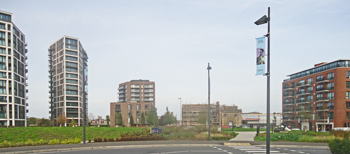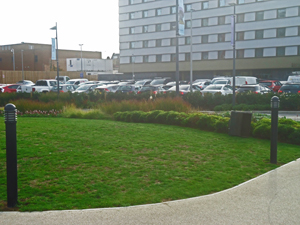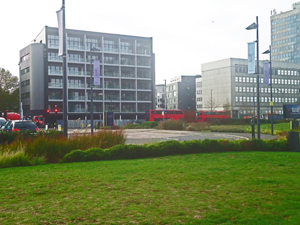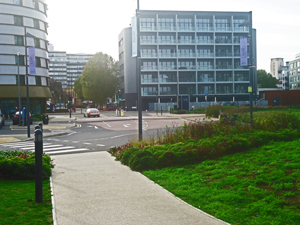|
Goldsmiths Almshouses 67-73 Warren Lane, Woolwich, SE18 6NG
|
Around 1560 Sir Martin Bowes (c.1497-1566), a wealthy goldsmith and former Lord Mayor of London, and a resident of Woolwich, founded five almshouses in East Street, a paved road (it was later renamed Warren Lane). This charitable act was purportedly occasioned when Bowes' son was saved from drowning by a Woolwich waterman.
In his will dated 20th September 1562, he left land and tenements to the Goldsmiths Company for various charities. These included an annual pension of £1 10s 5d (£1.52) for each of the five almspeople, and 6s 8d (33p) for a minister to give a sermon in the parish church of Woolwich once a year between Midsummer and Michaelmas, on the occasion when representatives of the Company visited the almshouses.
In another legal document, dated 20th September 1565, a year before his death, Bowes handed over the almshouses to the Goldsmiths Company, specifying that they be "for the free habitation of five poor inhabitants and parishioners of Woolwich, of the age of 50 years and upwards". The candidates were to be nominated by the Company. Although the gender was unspecified, the almshouses - described as pleasant and spacious - were inhabited exclusively by five poor widows, each of whom received a pension and coals. Each house had a little garden.
In 1621 four tenements, backing onto the almshouses and facing the ropeyard, were given to the poor by the will of Mr Richard Simms and his wife Ann. These later became part of the Woolwich Parochial Almshouses.
The almshouses were rebuilt by the Company in 1771 to provide more generous accommodation. The 2-storey block provided each widow with two rooms and a kitchen.
In the 1880s the almshouses were sold to the parish as the neighbourhood had deteriorated into a slum, dominated by prostitution.
Current status
The building survived until 1958, when it was demolished. The area was redeveloped into a light industrial zone, which in turn was demolished in 2007. The area is now a major housing redevelopment by the Berkeley Group - Royal Arsenal Riverside. The site of the almshouses is occupied by the edge of Maribor Park.N.B. Photographs obtained in October 2020

On New Warren Lane, looking towards the site of the almshouses. The back of the almshouses faced the southwest.
The area has been completely redeveloped by the Berkeley Group, but some old buildings of the Royal Arsenal survive. The Grade II listed 18th century Laboratory Pavilion West can just be seen in the centre of the image, hunkered between high rise blocks.

The edge of Maribor Park on New Warren Lane is where the rear of the almshouses was located.

The site of the northwest side of the almshouses (above) and the southeast side (below).


Warren Lane, which the almshouses once faced, has been completely transformed with modern housing.
References (Accessed 23rd October 2020)
Nicholls A 2014 Almshouses in Early Modern England: Charitable Housing in the Mixed Economy of Welfare c.1550-1725. University of Warwick.
Walford E 1895 Greater London: A Narrative of its History, its People and its Places. London, Cassell & Company,12.
http://edithsstreets.blogspot.com
www.bl.uk
www.british-history.ac.uk (1)
www.british-history.ac.uk (2)
www.british-history.ac.uk (3)
www.ucl.ac.uk
www.victorianlondon.org
Last updated 23rd October 2020
Click here to return to Almshouses of London alphabetical list
Click here to return to home page